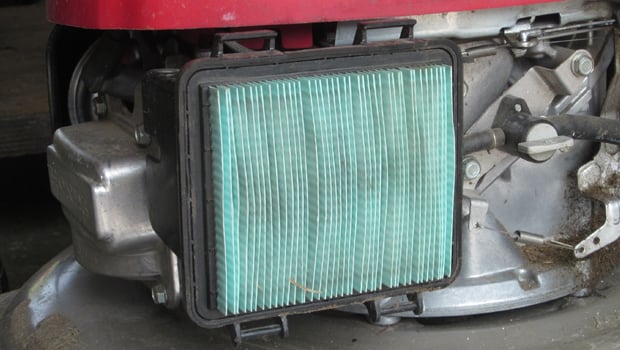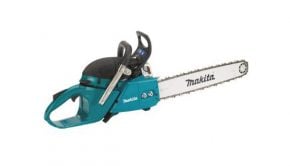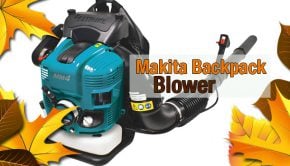How to Replace a Lawn Mower Air Filter
One of the easiest do-it-yourself maintenance projects you can do when it comes to your lawn mower is to replace the air filter. It may not seem that important, but having a clogged or dirty air filter is like having a stuffy nose.
As any allergy sufferer will tell you, there are many impurities in the air around us. Just as they can cause our bodies problems, they can also cause problems for your small engine. If your engine can’t breathe, it can’t function properly.
The primary function of the air filter is to clean the air before it is pulled into the carburetor to mix with the fuel, which then gets burned to create the compression to run the engine. If the air pulled into your engine has dirt and other impurities in it, they can build up and clog your engine, causing power loss and premature engine wear.
Here’s a basic process on how to replace your lawn mower air filter:
1.) Locate the Air Filter

Many lawn mower air filters are located on the side of the engine.
Visual inspection of your air filter is the first step in this replacement process.
Every small engine manufacturer puts the air filter in a different place on the engine, but they are usually placed on the side behind a plastic or metal cover.
2.) Remove the Cover

Remove the Air Filter Cover.
Once you locate the air filter cover on the engine, you may find it is attached with quick release tabs, or you may need a screwdriver or wrench to remove it. Carefully remove the cover, taking care to keep track of any screws or bolts that may be holding the cover in place.
After the cover is removed, you can inspect the air filter. At this point it is wise to make a note of how the filter is positioned in its compartment.
Now let’s take a look at the different types of air filters you may encounter on your own lawn mower:
Pleated Air Filters

Pleated Paper Air Filter.
Pleated paper air filters come in a variety of designs, from flat squares or rectangles, to ovals circles and cylinders. Some have a metal mesh covering, but all of them use a special folded paper that has microscopic holes in it to trap the dirt, and let clean air pass through. They are considered disposable rather than being cleaned and reused.
Foam Air Filters

Foam Air Filter
Foam air filters are made to fit the shape of the compartment they rest in, and may also be incased in that frame as a single unit. Some foam filters require a coat of oil to help trap the dirt. Foam filters that aren’t oiled, will only trap the largest pieces of dirt.
Pre-Cleaners/Pre-Filters

Pre-Cleaners / Pre-Filters
A foam pre-cleaner or pre-filter are foam pieces that function as a first line of defense against the dirt and impurities in the air. They generally fit on the outside of a pleated paper air filter, or between the air intake and pleated paper filter.
Dual Element Air Filters

Dual Element Air Filter
Dual element air filters are a two staged system. Consisting of an outer foam portion or pre-filter, covering an inner pleated paper core. They are designed to trap more dirt than other types of air filters, thus extending the life of the pleated paper core, and delivering cleaner air for the engine.
3.) Remove the Air Filter

Remove the air filter from the air filter housing.
Before removing the air filter, make note of how it fits. Also take the time to wipe the compartment clean, taking care not to let any dirt in to the engine.
- Pleated paper air filters are designed to be disposable. Inspect the filter for dirt, holes, and tears. Any of those are reasons to replace the filter, but if it’s lightly soiled and most of the dirt can be dislodged with a gentle tap on a flat surface, you may be able to use it a bit longer.
- Foam air filters and foam pre-cleaners are designed to be reused, but should be replaced if it is torn, or showing signs of considerable wear. If the foam appears to be in good shape, it can be washed and reused. We recommend starting with plain water. If it’s still not coming clean, try using a mild dish soap. Be sure not to use a heavy detergent that may not rinse out completely. For heavily soiled filters, with gasoline or oil residue, other cleaners may be needed. If you’ve tried everything and the filter is still stained, replace it.
Once you’ve made the decision whether to clean or replace your filter, there are a few more things to consider before you can get your mower back to work.
- Inspect the sealing gasket between the air filter and carburetor, if it’s worn, it should be replaced.
- Not all foam filters and pre-cleaners need oiled. Consult your owner’s manual to determine if your foam filter or pre-cleaner calls for oil.
- If your air filter requires oil, use the same oil you put in the engine, taking time to squeeze the filter to work the oil throughout the filter. Also it is recommended that after saturation, you wrap the filter in a paper towel or rag and squeeze out the excess. It just needs to be very lightly coated, not soaked.
- If the pre-cleaner is the oiled type, make sure you insert the mesh toward the paper element so that the paper is never exposed to the oil.
4.) Install the New Air Filter

Install the new air filter and reattach the cover.
Reinstall the new air filter by making sure it’s seated properly in the air filter base/housing. Reattach the cover and tighten any bolts or screws that were removed at the beginning of this process.
It is never recommended that you run your small engine without the air filter because doing so can allow dirt to get in to the engine and cause clogs in the carburetor, and quickly lead to cylinder damage.
Check your owner’s manual for the manufacturer’s suggested intervals for air filter maintenance. We suggest inspecting and possibly replacing your air filter as part of your regular maintenance at the beginning of the season. Standard suggestions are to clean the foam pre-cleaner every 25 hours of use, and replacing pleated paper air filters after 300 hours of use. Your time may vary and be increased with dusty conditions.
Jack’s Safety Tips: Before servicing or repairing any power equipment, disconnect the spark plug and battery cables. Remember to wear appropriate safety glasses and gloves to protect against harmful chemicals and debris. View our Disclaimer.
Featured Parts and Products:







Pingback: How To Clean A Foam Air Filter Lawn Mower | Fix How To